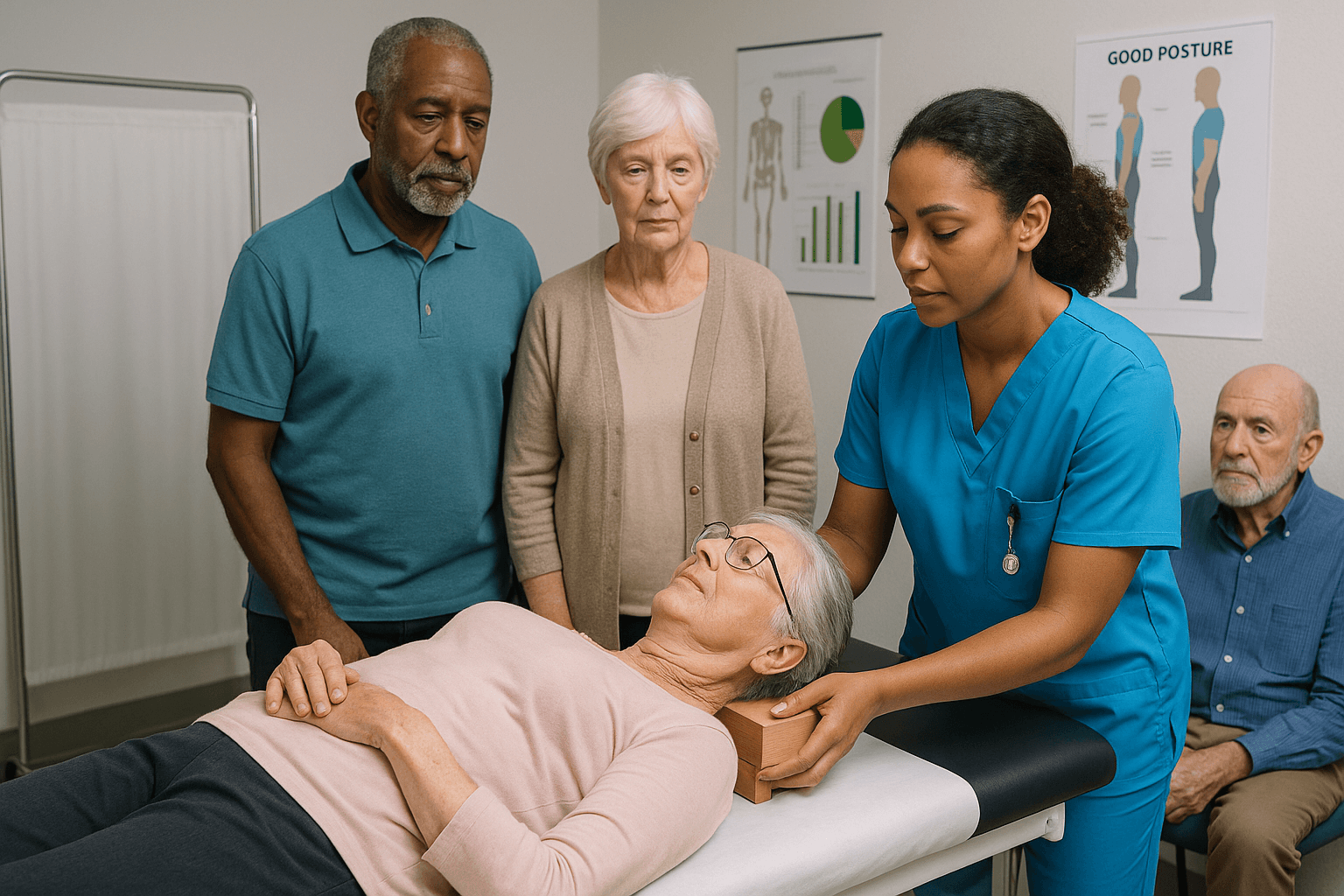A little stiffness here, some back pain there—easy to ignore, right? But when these discomforts stick around or keep coming back, they’re often signals that your spine and posture are under stress. The body has a way of whispering before it starts shouting.
If you’re in Sutton Coldfield and thinking, “Do I really need to see a chiropractor?”, this guide breaks down the five most common signs that it’s time to consult a specialist in posture and spinal correction. And no, not all chiropractic care is created equal. At Upright Posture, we focus on Advanced BioStructural Correction (ABC™)—a method that goes far beyond the average crack-and-go clinic.
Jump To:
TLDR – Quick Guide
- Persistent or recurring pain may mean structural issues that need professional correction
- Postural changes like slouching or uneven shoulders aren’t just cosmetic—they signal deeper problems
- Headaches and migraines can be rooted in spinal misalignment
- Reduced flexibility and range of motion = your body compensating for mechanical faults
- Injuries from sports, falls, or accidents often leave hidden imbalances that only a specialist can correct
5 Signs It’s Time to See a Specialist
1. Persistent Back or Neck Pain
Pain that doesn’t go away with rest, stretching, or over-the-counter medication isn’t just annoying—it’s a sign your body is stuck in a faulty pattern. The discomfort is often the result of spinal misalignments your body can’t correct on its own.
A specialist trained in Advanced BioStructural Correction (ABC™) doesn’t just relieve the pain—they correct the structure causing it, helping your body unwind years of compensation. If back or neck pain is your new normal, it’s time for a better plan.
2. Poor Posture and Visible Imbalances
Notice your head jutting forward? One shoulder higher than the other? These aren’t just quirks—they’re mechanical problems in your body’s alignment. Over time, poor posture leads to joint stress, muscle fatigue, and even nerve compression.
Specialists at Upright Posture use Posture Correction protocols to realign the spine and train the body to hold itself upright naturally. Better posture isn’t just about appearance—it means more energy, less tension, and a stronger spine for life.
3. Frequent Headaches or Migraines
If your headaches seem to come from nowhere—or follow long hours at a desk—they may have a mechanical root, not just a neurological one. Misalignments in the cervical spine (neck area) can pinch nerves and limit blood flow, triggering headaches and even migraines.
Rather than relying on painkillers to numb the symptoms, chiropractic care addresses the spinal causes of your discomfort. If this sounds familiar, Upright Posture’s approach may include structural correction and cranial techniques to support long-term relief. (We also offer ABC Endonasal Cranial Correction when appropriate.)
4. Reduced Flexibility or Range of Motion
Struggling to turn your head fully or reach overhead without tightness? That’s often a result of structural compensation, where the body limits movement to protect unstable joints or muscles. While you may not feel intense pain, your mobility is already compromised.
A chiropractor trained in identifying and releasing these restrictions can help restore full range of motion, reduce stiffness, and prevent your body from reinforcing these faulty patterns.
5. Recovery After Injury
Sports injury? Car accident? A bad fall you never really recovered from? Even when pain fades, injuries often leave compensations—your body shifts to avoid pain, creating misalignments that become long-term dysfunctions.That’s why athletes and active individuals seek care from a Sports Chiropractor who understands the body’s biomechanics and the importance of correct recovery. Whether you’re a weekend warrior or recovering from whiplash, structural correction ensures your body heals right—not crooked.
Key Takeaways
- Don’t ignore persistent pain, postural changes, or reduced mobility—they’re your body’s way of asking for help
- Chiropractic care, especially when powered by Advanced BioStructural Correction (ABC™), addresses root causes, not just symptoms
- Signs it’s time to see a specialist include chronic pain, visible imbalances, recurring headaches, mobility issues, and post-injury compensation
- Early intervention leads to faster recovery, better posture, and fewer long-term problems
FAQs
1. How do I know if my pain is serious enough for a chiropractor?
If your discomfort lasts more than a few days, limits your movement, or keeps returning, it’s time to consult a specialist. Pain is often your body’s warning sign of deeper issues—don’t ignore it.
2. Can chiropractic care help with posture correction?
Yes—especially when it involves methods like Posture Correction based on structural realignment. Over time, it helps restructure your body to hold itself upright without effort, reducing pain and fatigue.
3. Is it normal to feel sore after a chiropractic session?
Most of the time you will not feel sore but occasionally some mild soreness may occur if significant changes occurred during the appointment —similar to muscle soreness after a workout. It usually fades within minutes to hours as the tissues adapt to your new positioning.
4. Can chiropractic treatments prevent future injuries?
Absolutely. By improving posture and structural balance, chiropractic care reduces the chance of overuse injuries, joint stress, and muscle imbalances. It’s not just about pain relief—it’s preventive healthcare.
5. How often should I see a chiropractor?
That depends on the severity of your condition and your goals. Acute issues may require more frequent visits at first, while long-term maintenance is usually two times a month. At Upright Posture, we tailor plans based on your alignment, lifestyle, and response to care.
Disclaimer
At Upright Posture, we don’t offer standard chiropractic care. We specialize in Advanced BioStructural Correction (ABC™)—a system designed to fix the structural misalignments that cause long-standing pain, poor posture, and recurring tension.This method doesn’t just “adjust” your spine—it helps your body unwind years of compensation, restoring natural movement and balance. If you’ve tried traditional chiropractic without lasting change, our approach may be what you’ve been missing.






